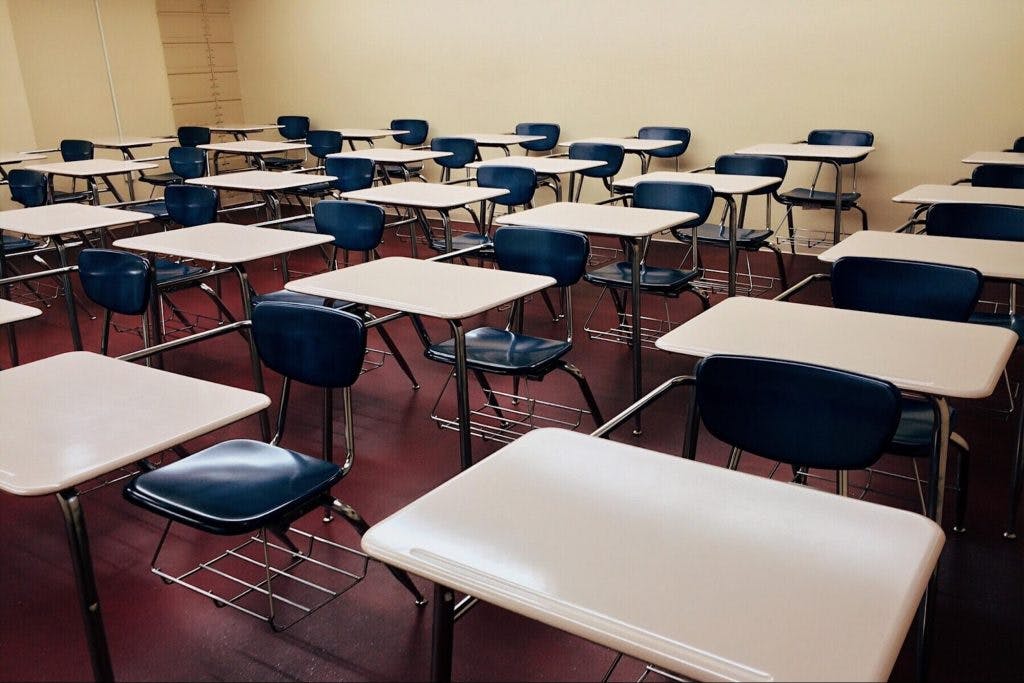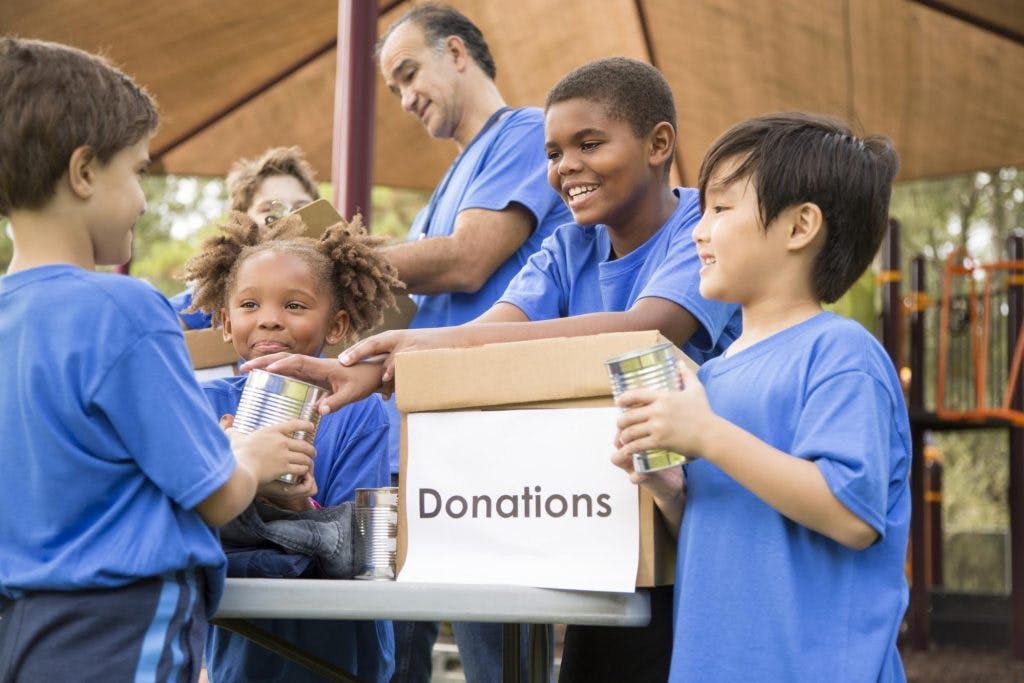

What’s the point of an in-school suspension?
Is it to punish students for bad behavior? Remove them from class so other students can keep working? Keep them from an out-of-school suspension?
Focusing on the narrow applications of an in-school suspension means losing sight of the positive impact this strategy can have on your school culture.
In-school suspension, also known as ISS, is a form of punishment that keeps students in school and doing work, but isolates them from the rest of the student body.
In some schools, in-school suspension is an essential part of a behavior management program, while for other schools it’s a way to reduce out-of-school suspension numbers.
In-school suspension can be an effective tool when it comes to student behavior and achievement, but only if it’s used properly.

There are three ultimate goals of any in-school suspension program:
Students who spend less time in the classroom generally tend to have lower-than-average student achievement rates. While in-school suspension keeps students out of their regular classrooms, the program also provides:
An effective in-school suspension program can detect learning disabilities and provide support for behavioral issues before they become serious issues. When students receive the support they need, they’re less likely to be referred to the in-school suspension program again.
Other benefits of a developed in-school suspension program include:
Receiving an in-school suspension is enough to prevent some students from repeating bad behavior. Other students might need extra support to correct patterns of behavior and address underlying issues.
Remember the three goals of an in-school suspension program:
Every school’s in-school suspension program is going to look different based on student need and school resources, but many successful programs have these 6 elements in common:

Students respond well to structure and consistency, not decisions made on a case-by-case basis. When the criteria for receiving an in-school suspension isn’t explained, students are more likely to:
Students should understand what will earn them an in-school suspension. Consider setting out a clear code of conduct at the beginning of the school year.
Have staff enforce the rules in accordance with these guidelines, and encourage them to do it in a way that doesn’t emphasize existing racial, learning or economic disparities.
Provide incentives to students for doing well, like added privileges or low-cost rewards. Praise positive behavior as often as you discipline negative behavior. Students need to understand what they did to receive an in-school suspension was unacceptable and their behavior has consequences, for better or worse.
Students should also have a clear and accessible list of in-school suspension rules. Some examples include:
It might seem harsh, but in-school suspension isn’t meant to be a vacation from the classroom. Enforcing a clear set of rules can help you discourage certain students from repeating their bad behavior.
2. Effective professional development for teachers

In order for an in-school suspension program to be effective at reducing suspensions, teachers have to use effective classroom management techniques.
Students should only be referred to in-school suspension when necessary.
According to a study by educational researchers Susan Polirstok and Jay Gottlieb, what teachers say and do in the classroom can have a large impact on student behavior and learning. Polirstok and Gottlieb aimed to design a training program for teachers:
“Focused on behavior management procedures employing positive behavioral interventions to increase the level of teacher praise and reinforcement to students, thereby decreasing punishment and negative teacher comments.”
They offered teachers seven half days of training over the course of four months, and a 45-minute follow-up session eight weeks after the program ended. Each half day began with a Q&A where teachers could as questions and discuss problems in their classes as a group. Specific sessions covered topics like:
At the end of the program, Polirstok and Gottlieb found what they expected:
“The findings of this professional development program confirmed what researchers and teachers typically say about classrooms — that successful behavior management is a critical prerequisite for successful academic instruction.”

Many teachers lack the skills they need to effectively manage their classrooms, either through lack of training or experience. In the same study, Polirstok and Gottleib note:
“All too often, novice teachers arrive at busy, urban schools lacking the techniques they need to create positive learning environments that can best meet the diverse needs of elementary level learners. Both pre-service teachers and novice in-service teachers lack the years of experience which over time informs classroom management generally and behavior intervention more specifically.”
After implementing the professional development program, school leaders reported a change in school climate, as well as a 61% decline in disciplinary referrals over the prior year and a 32% decline over the year before.
When teachers have the skills to effectively manage their classrooms, they’ll only refer more serious cases to in-school suspension, which reduces the overall number of suspensions and makes sure students who need extra behavioral or academic support have it.

Students can act out for a lot of reasons, including unmet behavioral needs, past trauma, or undiagnosed learning difficulties. In-school suspension offers a unique opportunity for qualified staff to sit down with students one-on-one, uncover the root of the issue and prevent it from happening again.
It’s not correct to assume students always know what they did was wrong and discipline will correct the behavior. Students might need a little extra coaching to determine why their behavior was wrong and how they can correct it in the future. Some popular techniques include:
Teachers should also be required to give students work to complete during the suspension, and students are responsible for completing the work in full. Some students might benefit from being assessed for learning disabilities or being provided with extra tutoring on difficult concepts.

An effective in-school suspension program should have a dedicated space and teacher to supervise students. In order to effectively work with students referred to in-school suspension, an educator needs to have a few key qualities:
Ideally, a program should have a teacher who can assess learning difficulties, a school counselor and a low teacher-to-student ratio to encourage good behavior. They should also be in a space away from the rest of students, to keep students from being distracted.
When in-school suspension programs aren’t in a dedicated space with a dedicated teacher, they lose their impact. It communicates to students you don’t want to put the time and resources into seeing them succeed and the program is a meaningless formality on the way to more serious consequences.
Use your resources to demonstrate a commitment to student success in all areas of the school and encourage students to take in-school suspension seriously.

Talking to parents about how you’re disciplining their child can be difficult, but involving parents in the discussion improves the chances students will get the support they need at school and at home.
There are a number of ways to involve parents when dealing with an in-school suspension:
Parent involvement depends on a lot of things, including their relationship with their child and their work schedule, so this might not always be the best option.
Regardless of how involved the parent wants to be, spend some time explaining how the in-school suspension program works in your school at the next parent evening or in a parent newsletter. Keep parents up-to-date and informed on ways they can get involved so they’re not blindsided if their child gets in trouble.

Budgets, staff, students and a calendar full of meetings — it takes a lot of work to keep a school running smoothly. But did you know, as a school leader, you can have a meaningful impact on the success of your school’s in-school suspension program?
As a school leader, you set the standards for acceptable behavior, organize professional development opportunities and decide what and how students learn at your school.
You know your school best, and have a responsibility to develop programs to meet the needs of all students. As a leader you can:
When Polirstok and Gottlieb studied professional development and in-school suspension, they found something else that was crucial for the program’s success:
“The role and reputation of the principal as a leader and respected colleague could have also had an impact on the performance of each of these schools. It would seem that the active participation of the principal in this type of school-wide intervention may be a critical variable.”
Your job is to get involved and be a positive example of the culture you want to see in your school!
In-school suspension works in certain cases, but it’s not always the best method for every student. For students at a higher risk of dropping out of school or students with an individual education program (IEP), in-school suspension could actually make underlying issues worse.
Sometimes it makes sense to explore alternate methods, with the same three goals in mind:
Social-emotional learning is a program for the entire school that encourages the development of healthy relationships and emotional skills.
At Valor Collegiate Academies, a charter school in Nashville, social-emotional learning is a priority. Their program requires students to participate in morning meetings and a mentor program. Students move through different levels of the program to earn various privileges.
During the meetings and mentorship program, students work through behavior challenges. The program is also used to discipline students using a restorative justice model.
As a whole, the school places an emphasis on supporting the diversity of their students— a key component in a school with a racially and economically diverse student body, originally created to combat highly segregated school districts.
And it’s working!
During Valor’s first year there were no suspensions, and there were only 17 suspensions when the school expanded from 100 to 500 students the year after.

Instead of serving a regular detention or suspension, students can participate in community service activities outside of school hours to give back to the community.
Ideas for community service opportunities include:
Community service gives students the opportunity to meet new mentors, learn new skills and redirect their energy towards the good of the community, not their own misbehavior.
Restorative justice moves beyond discipline and into repairing relationships between students, teachers, staff and the community. It brings together students to talk about the issues in a calm and ordered manner, where they can air out their grievances, apologize for harm done and make restitution.
When restorative justice is used, the person who has been wronged or harmed has the opportunity to share their feelings and the impact with the person responsible for the harm, who can then work to repair the relationship.
There are many different ways to explore restorative justice in the classroom:
In some schools, restorative justice is a formalized process, while in other schools it can be as simple as waiting 10 minutes after a conflict and sitting both parties down to discuss.
There are a lot of different factors that influence student misbehavior, including learning needs and behavioral issues.
In-school suspension communicates to students that their behavior was unacceptable, and looks at the whole picture to determine if the student needs extra support. Providing students with the resources they need should be the ultimate goal of any school, and in-school suspension is just one part of that support.
When students have these resources, they’re less likely to repeat in-school suspension and more likely to succeed in the classroom. What could a successful program look like in your school?
Prodigy is a fun an engaging game-based learning math platform that gets students excited about learning math. Curriculum-aligned and adaptive, teachers can use Prodigy's tools for easy differentiation, assessments and classroom activities.